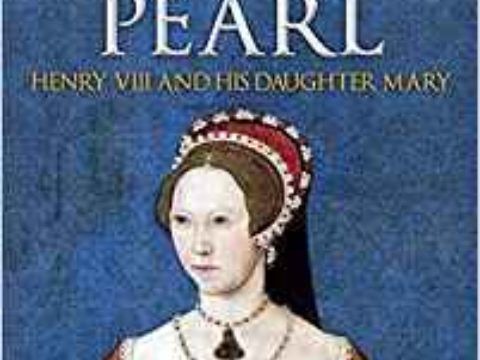Katherine Parr
Katherine was born in 1512 to Sir Thomas Parr and his wife Maud. The eldest of three siblings, she received an education designed to fit her for the role of wife and mistress of a household, but probably with some of the additional Humanist teaching becoming fashionable for the daughters of Henry VIII's courtiers. Katherine's father died when she was about five, and the dominant role in her childhood was played by her mother. A strong parental interest was taken in the Parr children by their uncle, Sir William Parr of Horton, and a cousin, Cuthbert Tunstall, Bishop of Durham.
At the age of 16, Katharine was married to Edward Burgh, son of Sir Thomas Burgh of Gainsborough Hall, Lincolnshire. She lived in the house of her parents-in-law until Sir Thomas Burgh gave them a home of their own at Kirton in Lindsey. The couple were of a similar age, but nothing is known of their relationship, other than that it did not produce any children by the time Edward died in 1533, leaving Katherine a widow at not quite twenty-one.
Katherine Parr
Family Tree
Katherine's widowhood was of short duration. She probably spent the year with relatives at Sizergh Castle, in Westmoreland, before remarrying in the summer of 1534. Her second husband, John Neville, 3 rd Baron Latimer, was a widower of about 40, with two children. He had spent most of his life in the north, taking part in Henry VIII's various military jaunts against the Scots, and visiting London to attend Parliament from time to time. Although Latimer was nearly twenty years older than Katherine, the couple seem to have been reasonably happy together.
However, Latimer was a man of rather irresolute character, probably conservative in religious outlook and in no way prepared for the onslaught of the Pilgrimage of Grace. Latimer was one of the nobles whom the rebels forced to join the rebellion. He was no favourite of Henry VIII or Cromwell and it seemed likely he would be punished for his part in the revolt. The Duke of Norfolk spoke up for him, however, and his life was spared. Following this, he was probably glad to move south with Katherine for the last years of his life, dying in early 1543, leaving Katherine, a widow again at about 30 years old, with a reasonable inheritance and responsibility for the upbringing of his daughter.
It is not clear whether Katherine was with Latimer throughout his illness, or whether she had begun to spend time at Court with the Lady Mary. Whilst about the Court, she caught the eye of the King, and before long, he was sending gifts and visiting her daily. By summer 1543 her fate was sealed and she married Henry as his sixth wife.
As Queen, Katherine displayed a natural skill in creating settings of elegance and display, both to please her husband and to demonstrate his wealth and power to Ambassadors and foreign governments. Henry showed his trust in her by appointing her as Regent in 1544. Above all, she created a more harmonious atmosphere for her three new step-children, building close relationships with all of them, despite their disparate temperaments.
But not all was plain sailing, as her increasing dedication to the cause of religious reform made her a target of plots from the Catholic party. She was lucky to escape arrest and potentially burning for heresy, through her quick thinking and skill in managing Henry.
On Henry's death, although not appointed Regent, she received a generous bequest and retired to her home at Chelsea, accompanied by her younger step-daughter Elizabeth. To outward appearance, she began an appropriate period of mourning but in secret, she was already receiving the attentions of Sir Thomas Seymour and at some time in spring of 1547, she married him.
The marriage was one of genuine affection, although there were political overtones. Sadly, it was marred by Seymour's scandalous flirtation with the young Elizabeth. Katherine seems to have overcome this, and, pregnant for the first time, moved to the delightful Sudeley Castle to give birth. On 29th August 1548 she gave birth to a daughter, Mary Seymour. In what seems a cruel trick of fate, Queen Katherine died a week later from puerperal fever unable to long enjoy the happiness she surely deserved.


